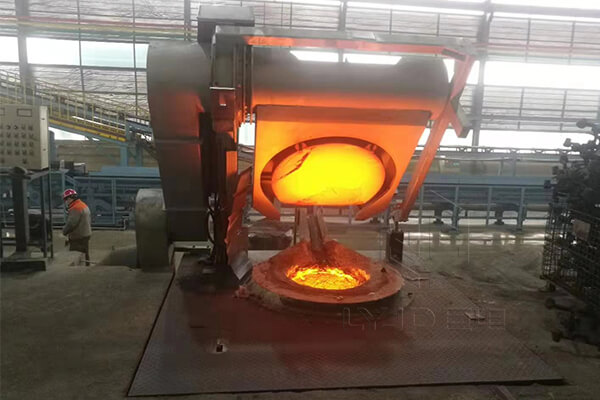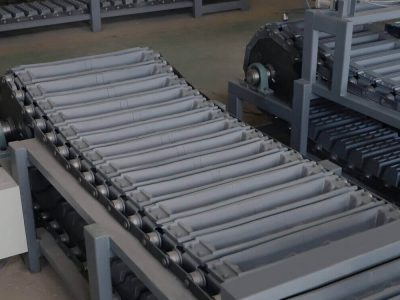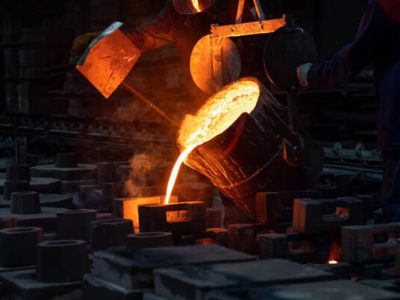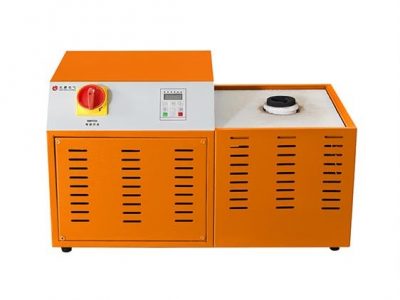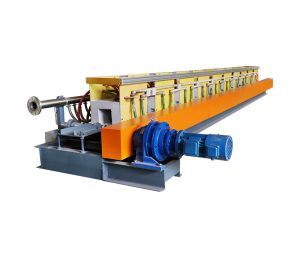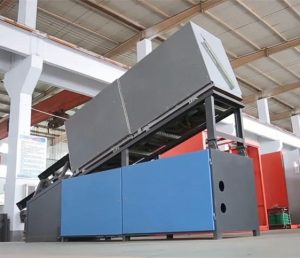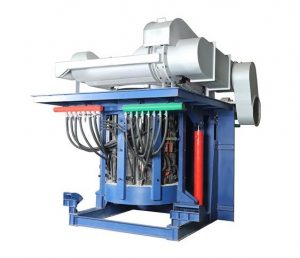An electromagnetic furnace, also known as an induction furnace, is a type of furnace that uses electromagnetic induction to heat and melt metal. It is widely used in various industrial applications for melting and casting metals.
Work Principle of an Electromagnetic Furnace
Induction Coil
The furnace consists of a coil made of copper or other conductive material. This coil is known as the induction coil.
Power Supply
An alternating current (AC) power supply is connected to the induction coil, which generates a rapidly alternating magnetic field when the current flows through it.
Eddy Currents
When a conductive material, such as metal, is placed within the alternating magnetic field, it induces eddy currents within the material due to electromagnetic induction.
Heat Generation
The eddy currents circulate within the metal, and their resistance causes them to dissipate energy in the form of heat. Within the metal itself, the heat generates, leading to rapid and efficient heating.
Melting and Casting
As the metal heats up, it eventually reaches its melting point. At this stage, the molten metal can be poured or cast into molds for further processing.
Power and Frequency
Power
Electromagnetic furnaces are available in various power ratings, ranging from a few kilowatts to several megawatts, depending on the application and the size of the metal.
Frequency
The frequency of the alternating current supplied to the induction coil affects the heating characteristics. High-frequency furnaces (typically above 1 kHz) are suitable for small-scale melting, while medium-frequency furnaces (typically below 1 kHz) are used for larger-scale applications.
Types of Electromagnetic Furnaces
Coreless Induction Furnace
This type of furnace consists of a crucible surrounded by an induction coil. It is primarily used for melting and casting small to medium-sized metal batches.
Channel Induction Furnace
In this design, the metal flows through a channel formed by a refractory material surrounded by an induction coil. Channel induction furnaces are commonly used for continuous casting processes.
These furnaces combine electromagnetic induction heating with a vacuum environment. They are for specialized applications such as melting reactive metals or alloys and producing high-quality castings.
Advantages of an Electromagnetic Furnace
Energy Efficiency
Electromagnetic furnaces are highly energy-efficient due to the direct generation of heat within the metal, minimizing heat loss to the surrounding environment.
Precise Temperature Control
These furnaces offer precise temperature control, allowing for accurate heating and melting of metals.
Rapid and Uniform Heating
Induction heating is faster than any other heating methods, which can result in increased productivity and shorter processing times.
Electromagnetic induction allows for uniform heating throughout the metal, minimizing temperature gradients and ensuring consistent quality.
Versatility
Electromagnetic furnaces can accommodate a wide range of metal types and alloys, making them suitable for various industrial applications.
Clean and Environmentally Friendly
Induction furnaces do not generate combustion gases, making them cleaner and more environmentally friendly compared to fossil fuel-based furnaces.
Applications of an Electromagnetic Furnace
Metal Casting
One of the most commonly applications of an electromagnetic furnace is melting and casting various metals, including steel, iron, copper, aluminum, and precious metals.
Foundries
Foundries employ induction furnaces for melting scrap metal and producing castings.
Metalworking Industry
Induction furnaces are used in the metalworking industry for heat treatment, forging, and brazing processes.
Laboratory and Research
Induction furnaces find applications in laboratories and research facilities for material testing and research purposes.
Limitations and Considerations
Initial Cost
Electromagnetic furnaces generally have higher initial costs compared to other types of furnaces due to the complexity of the induction heating system and power supply requirements.
Sensitivity to Material Properties
The efficiency of electromagnetic furnaces can vary depending on the electrical conductivity and magnetic permeability of the metal. That is to say, certain materials may require specific adaptations to optimize the heating process.
Maintenance and Safety
Regular maintenance and calibration of induction coils, power supplies, and cooling systems are necessary to ensure optimal performance and safety.
Finally
Electromagnetic furnaces have revolutionized metal melting and casting processes, offering improved efficiency, control, and versatility in industrial applications. Their ability to provide precise heating and rapid melting has made them a popular choice in various industries that require reliable and efficient metal processing.
























